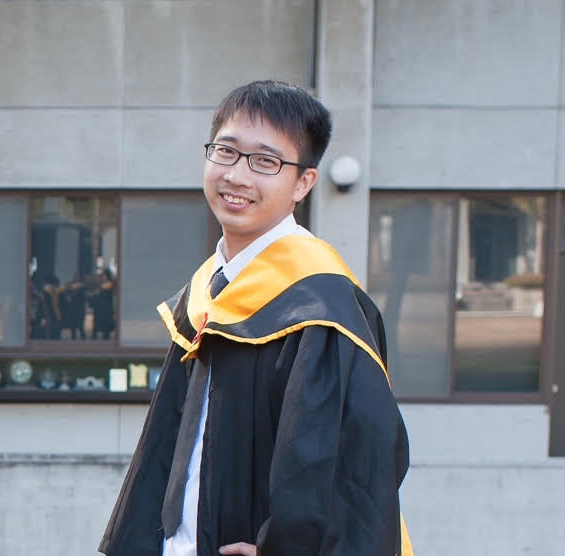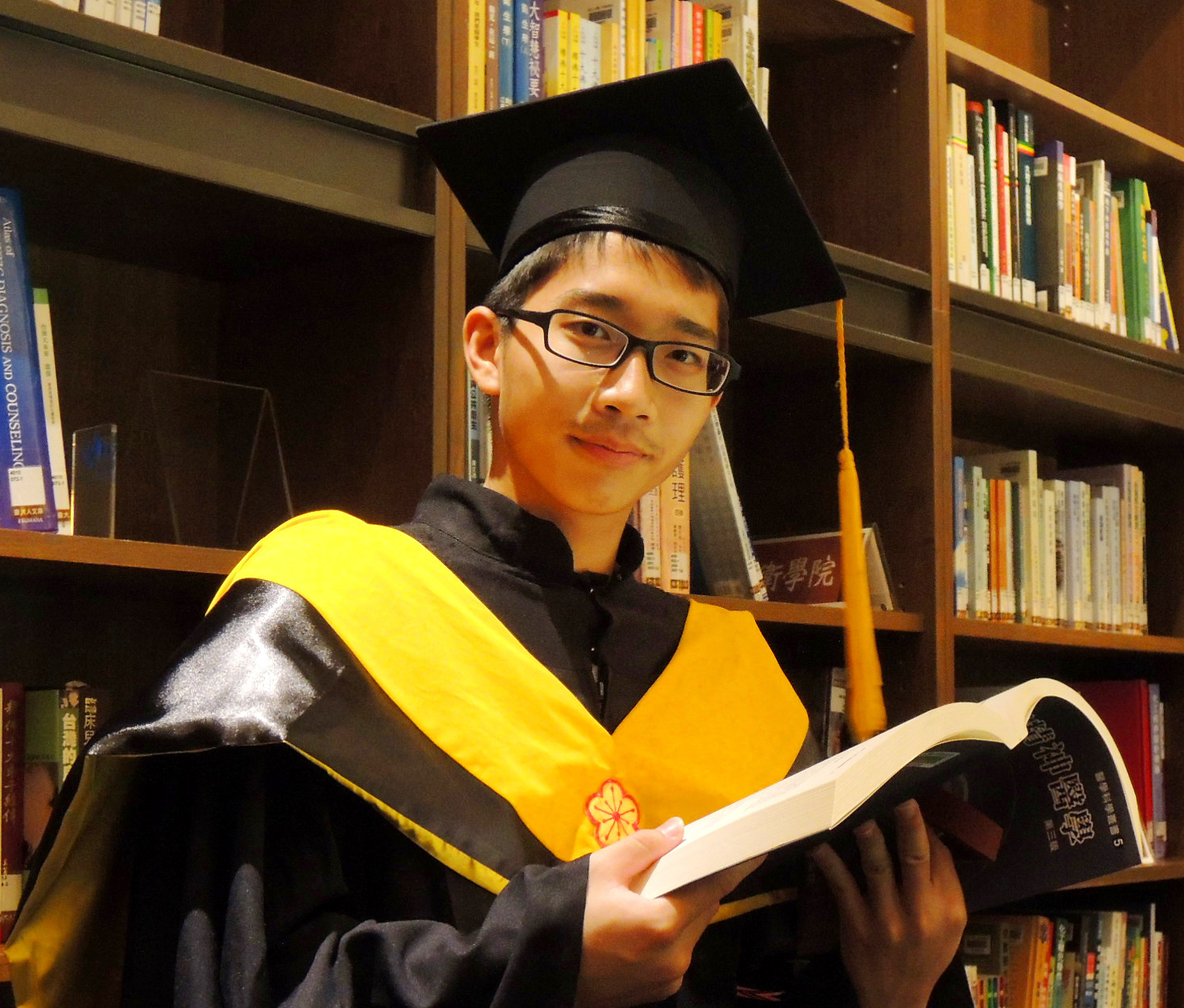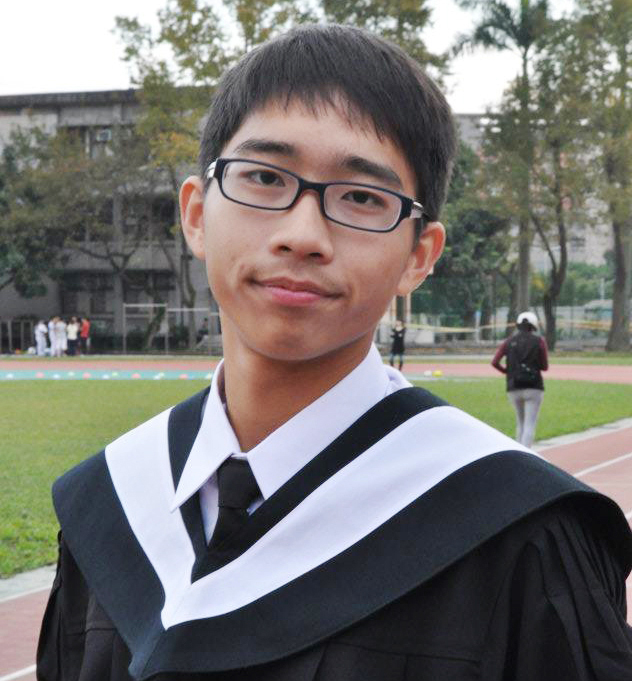“You can’t connect the dots looking forward; you can only connect them looking backwards. So you have to TRUST that dots will somehow connect in your future.” – Steve Jobs (2005)
-

Ph.D. (2021) @ Department of Geography, National Taiwan University
Advisor: Prof. Tzu-How Chu
Average GPA: 4.12/ 4.3 (76 credits)
Keywords: Spatiotemporal network analysis, spatial data mining, spatial statistics, complex network analysis, big data analysis, and machine learning.
In the first two years, he subsequently seismic precursor research along with the context of his master dissertation from theoretical approaches, such as simulation, on-site experiment, and machine testing. He even designed a series of experiments with his Prof. Jiun-Huei Proty Wu (Department of Physics, National Taiwan University). Unfortunately, the original machines for seismic precursor detection were not stable, and few problems had arisen simultaneously. In the third year, he changed his dissertation topic from earthquake to air transportation, one of his favorite interests (e.g., following the latest news in aviation, driving an airplane with a simulator app, and collecting airplane models). Combining his interest, spatiotemporal data analysis, and programming skills into research, he processed hundreds of million flight data. He unveiled the high frequency and dense network of an airline alliance, directly/ indirectly elaborating the internal market regions with an airport community concept since all member airlines within an airline alliance seek the same commercial goals. The contribution of his dissertation uncovered the spatial distribution of an airline alliance's internal market structure and preferred quantitative approaches to better our understanding of collaborative relationships within an airline alliance, dominant routes between airline alliances, and competitive routes among airline alliances. In the last one and half years, he leveraged his transportation knowledge to contribute to a serious contagious disease, COVID-19, from two perspectives: the impact of city lockdown policy on disease transmission and timely exposure risk for global air travel. The first research has been published in Q1 SSCI Journal, while the second is submitted. More details are listed in Publication/ Journal Section.
-

M.S. (2020) @ Department of Food Science, Nutrition,
and Nutraceutical Biotechnology, Shih Chien University
Advisor: Prof. Yi-Yuan Shao
Average GPA: 4.0/ 4.0 (30 credits)
Keywords: Starch chemistry, ultrasonication, in vitro digestibility, high amylose maize starch, machine learning.
Metabolic syndrome is one of the common diseases in most developing and developed countries; hence, slowly digestible starch (SDS) and resistant starch (RS) have been the mainstream of starch science. Scholars leveraged several conventional and novel food processing techniques (e.g., annealing, heat-moisture, ultrasonication, microwave, and high-pressure processing) with various materials (e.g., potato, maize, and pea) that targeted to achieve a higher yield of SDS and RS; meanwhile, they purposed many mechanisms to explain why they could have a high yield according to apparent amylose content (AAC), differential scanning calorimetry (DSC), scanning electric microscopy (SEM), short-range and long-range ordered molecular structure (e.g., FTIR and XRD), rapid visco analysis, high-performance size-exclusion chromatography (HPSEC), and in vitro digestibility. However, there was no state-of-art that quantitatively indicated the importance of parameters among these analysis results and gave a compelling explication to lead the future research directions. Considering sustainable development goals and the current research gap in starch chemistry, he designed an ultrasonic-assisted SDS and RS production via semi-gelatinized high-amylose maize starch. Several parameters (AAC, DSC, FTIR, XRD, HPSEC, in vitro digestibility) had been investigated and utilized for formulating quantitative SDS and RS mechanisms via principal component analysis and multivariate linear regression. Remarkably, this research was published in the top food science and applied chemistry journal, Food Hydrocolloids (IF: 9.147), in April 2021. More details are listed in Publication/ Journal Section or View Online.
-

M.S. (2015) @ Department of Geography, National Taiwan University
Advisor: Prof. Tzu-How Chu & Prof. Jiun-Huei Proty Wu
Average GPA: 3.75/ 4.3 (31 credits)
Keywords: Seismic signals, electromagnetic signal processing, earthquake precursor recognition, and machine learning.
Along with the research philosophy "helping people," earthquake is one of the most serious and common natural disasters in Taiwan; however, there are no available and reliable state-of-art techniques that can effectively predict the location and timing of seismic events. The pivot reason for this problem is that we cannot simulate or precisely observe its mechanism in situ, providing significant insight for further seismic precursor detection and seismic event prediction. We set up six seismic precursor monitoring systems that continuously capture electromagnetic signals. Several signal processing techniques were adopted to reveal seismic precursors, such as fast Fourier transform, convolution, and high-pass frequency filters. Seven characteristic frequency bands have been identified as the major source of seismic precursors one week before. Spatial statistics and spatial interpolation were used to locate the epicenter, where PCA regression was conducted to calculate the possible magnitude of earthquakes. More details are listed in Publication/ Master Dissertation.
-

B.S.S. (2012) @ Department of Social and Regional Development, National Taipei University of Education
Advisor: Prof. Yuan-Fang Tsai
Average GPA: 3.79/ 4.3 (174 credits)
Keywords: debris-flow cluster and modified critical rainfall line.
During my four-year undergraduate life, he accomplished two undergraduate projects (critical rainfall line establishment for debris-flow disaster prevention and organometallic complex synthesis for ring-opening polymerization) and a teacher education program (for elementary school). Here, we only focused on the debris-flow project, and the detailed information of the inorganic chemistry project could be found in Publication/ Undergraduate Dissertation. Taiwan has been suffered from a debris-flow disaster, causing a huge number of financial losses and lives every year. However, there is no suitable model for rapidly calculating the critical rainfall line for each debris-flow stream since the hydrological and geological factors vary with time. Therefore, he leveraged the family competition genetic algorithm (FCGA) and k-means clustering to group all debris-flow streams by their hydrological and geological conditions. Furthermore, he combined a support vector machine to define each cluster's boundary condition of debris-flow occurence. His research was selected (Highest) on the Undergraduate Student Thesis Presentation in Class of 2012, National Taipei University of Education, won the First Prize on The 12th Cross-strait Symposium on Environment, Resource and Ecological Conservation, Nanchang, Jiangxi, China. The final results also were presented in The International Conference on Earth Observations and Societal Impacts 2012 (ICEO-SI 2012), Taipei, Taiwan.



